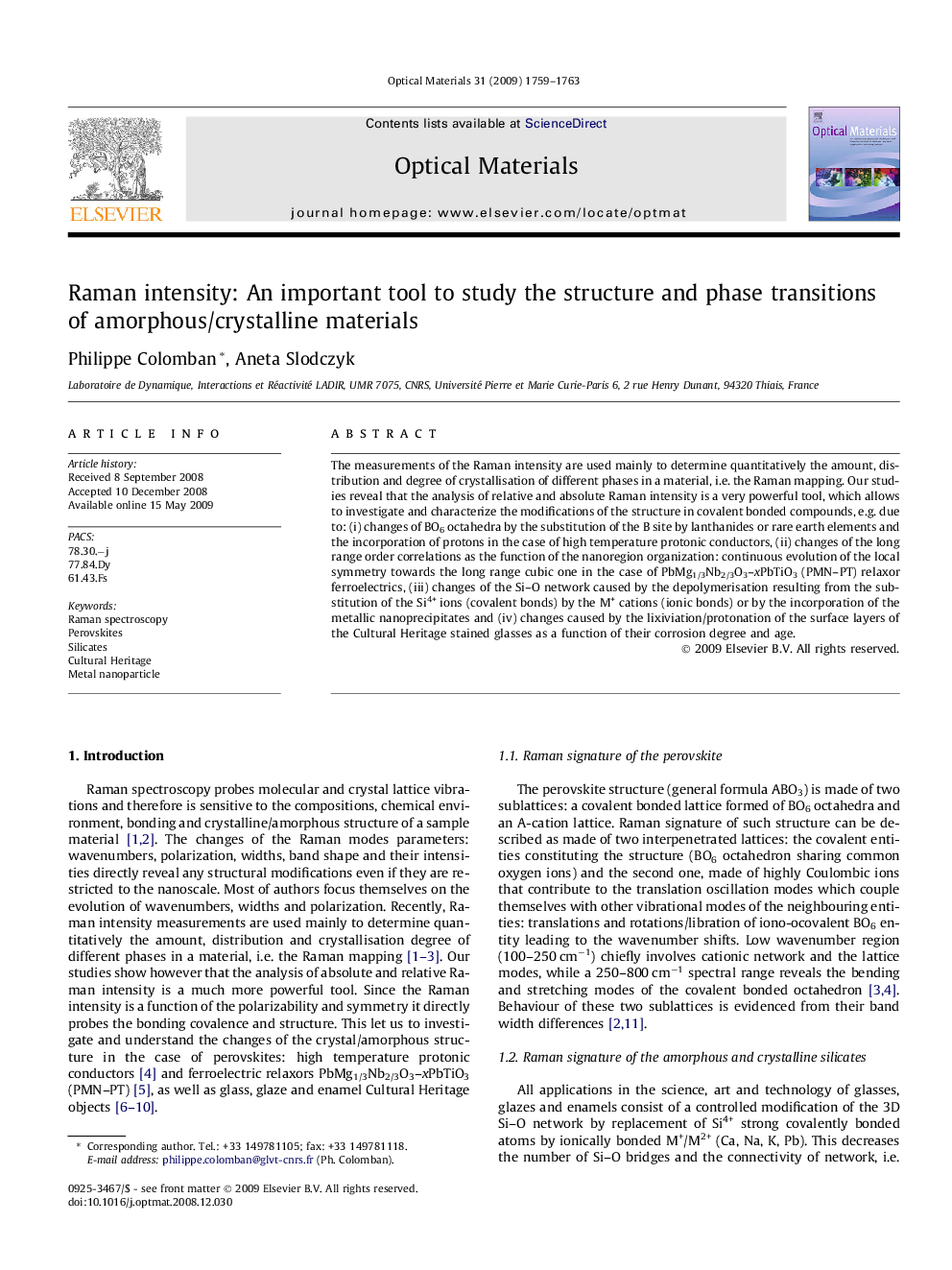| کد مقاله | کد نشریه | سال انتشار | مقاله انگلیسی | نسخه تمام متن |
|---|---|---|---|---|
| 1496278 | 992959 | 2009 | 5 صفحه PDF | دانلود رایگان |

The measurements of the Raman intensity are used mainly to determine quantitatively the amount, distribution and degree of crystallisation of different phases in a material, i.e. the Raman mapping. Our studies reveal that the analysis of relative and absolute Raman intensity is a very powerful tool, which allows to investigate and characterize the modifications of the structure in covalent bonded compounds, e.g. due to: (i) changes of BO6 octahedra by the substitution of the B site by lanthanides or rare earth elements and the incorporation of protons in the case of high temperature protonic conductors, (ii) changes of the long range order correlations as the function of the nanoregion organization: continuous evolution of the local symmetry towards the long range cubic one in the case of PbMg1/3Nb2/3O3–xPbTiO3 (PMN–PT) relaxor ferroelectrics, (iii) changes of the Si–O network caused by the depolymerisation resulting from the substitution of the Si4+ ions (covalent bonds) by the M+ cations (ionic bonds) or by the incorporation of the metallic nanoprecipitates and (iv) changes caused by the lixiviation/protonation of the surface layers of the Cultural Heritage stained glasses as a function of their corrosion degree and age.
Journal: Optical Materials - Volume 31, Issue 12, October 2009, Pages 1759–1763